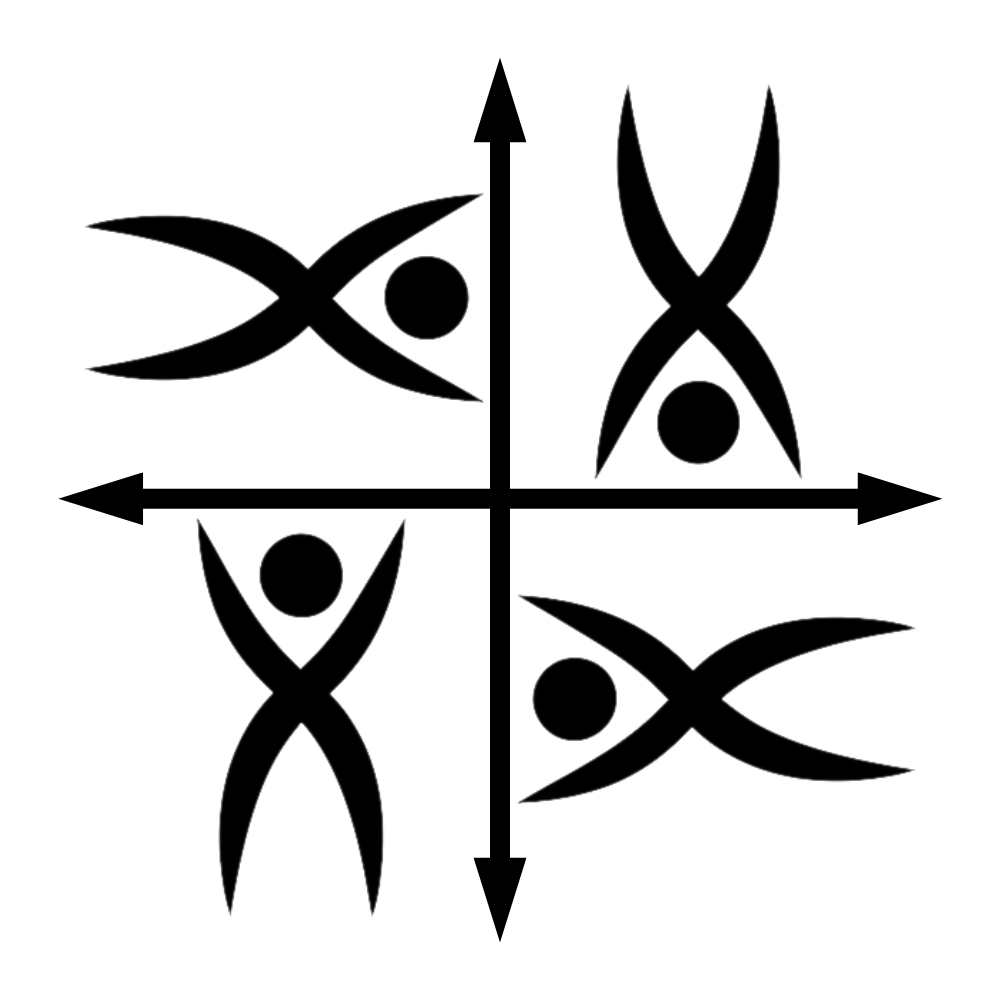About My Work
Beginning in 2010, I developed Quadrupedal Bodywork to support a world where we revere our bodies as a source of wisdom, discovery, and evolution: The body has a yin side and a yang side. One side cannot balance without simultaneous adjustment of its counterpart. All sides of every coin matter. Not just in the healing process, but in all time and space. Harmonizing yin and yang in the body conditions us to recognize the seen, the unseen, and their interconnectedness in every aspect of life. The root of all disorder goes back infinitely until the whole system is included.
Quadrupedal Bodywork is a system that maximizes the amount of impactful bodywork you can receive in a single session while being remarkably sustainable for the practitioner because prioritizes distribution of weight and rather than purely strength. It is a premium niche largely for discerning clients who are familiar with the manual therapies and the mind-body-spirit connection.
It is an adaptation of Quadrupedal Movement, a foundational conditioning practice in parkour and martial arts. Earlier in life, I was a pole dancer and a movement artist. Martial arts shaped my childhood and adolescence. Many pole dancers cross-train in parkour, and my former pole studio in Colorado was uniquely situated—tucked in the back of a world-class parkour gym. I’ve been immensely inspired by internationally known dancers and movement athletes whose work continues to inform my own.
“Quadrupedal” means moving on all fours. Primal movement. On my part, it demands innate flexibility and a high caliber of core strength to switch, shift, hover and glide in multiple directions simultaneously at just the right depth, angle, and rotation. I can coordinate up to 12 points of moving contact, each with its own specific intention, at a full spectrum of pressure options which I am capable of adjusting instantaneously. All meticulously harmonized. “A bodywork symphony,” it’s been called. I offer Quadrupedal Bodywork across a spectrum of needs and preferences. I can give some people the deepest bodywork they have ever experienced and I can hover like a humming bird over another person quite lightly. Most importantly, each session is collaborative and fine-tuned to what is needed in each moment.
While Quadrupedal Bodywork is often compared to Thai Massage for its surface similarities, particularly the use of body weight to create depth, the resemblance ends there. The two modalities differ greatly in philosophy and fundamentals. Thai Massage emphasizes dynamic stretching and compression along the energetic meridians. In contrast, Quadrupedal Bodywork is rooted in static traction and synchronized, multi-directional effleurage along muscles, tendons, and ligaments.
Quadrupedal Bodywork maximizes skin-to-skin contact with draping whereas Thai Massage is typically received clothed to support dynamic stretching. Skin-to-skin contact allows for clearer sensory feedback, fascial engagement, and a more direct, intuitive collaboration between practitioner and client.
First Defining Principle: Convexity vs. Concavity
The cornerstone of this work is its use of the practitioner’s own body as a tool of nuanced communication. Quadrupedal Bodywork leverages the complementary nature of distinctly convex and concave contact points. Knees and elbows offer convex “yang” contact—direct, penetrating, and sculpting. Palms and fingers provide concave “yin” contact—receptive, cradling, and supportive. Forearms and shins serve as midpoints, their impact shifting with angle, rotation and the terrain of the client’s body. The synchronization of convex and concave touch sets the client up for exponential results– the body can open to receive greater depth because it feels securely and safely held. It can let down its guard and trust in the present moment.
Second Defining Princple: Broad-Surface Contact
Receiving knee-based massage is an experience like no other. Unlike the sharp, poking sensation of elbow-driven pressure—which many clients find too uncomfortable—knee pressure offers a broader, more palatable application. It penetrates without triggering the body’s defenses. The result is the grounding, expansive sensation of being met. It reaches deep into the hips, glutes, upper, middle, lower back, and MUCH more in ways other techniques can’t. This work reorganizes fascia, reawakens dormant tissue, and invites the nervous system into a state of grounded receptivity. It’s not just deep tissue—it’s depth with intelligence, delivered through the architecture of the body itself.
Third Defining Principle: Maximizing Contact
While it shines in the realm of deep tissue, most Quadrupedal Bodywork techniques can also be offered luxuriously slowly and quite gently. Many clients who start out requesting lighter pressure eventually request solidly medium pressure because their bodies relax into trust. They know they are held and they won’t be elbowed unskillfully. Nonetheless, Quadrupedal Bodywork is not a subtle offering where less is more. More is more, in fact. Its goal is to offer clients two to four times the amount of combined bodywork they would typically receive in a typical massage session of the same length. The technique is highly synchronized. Clients receive complex combinations of intuitive, expansive touch from all directions. The result is a session that is radically thorough and exponentially impactful in helping clients reach their goals.

